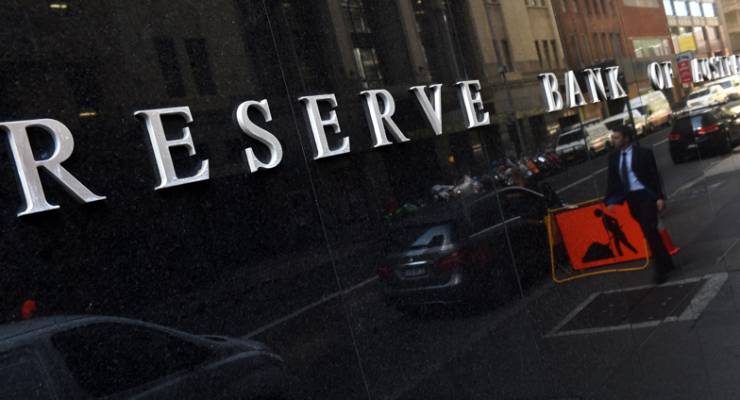
So will the Reserve Bank cut interest rates next Tuesday?
The overwhelming market consensus is yes. Twenty-one of 23 economists surveyed by Bloomberg say yes in the wake of this week’s weak inflation report for the June quarter, showing an annual rate in the year to June of just 1%, the lowest in 17 years. That is sharply lower than the RBA’s first estimate of 2-3% in the May 2015 Statement of Monetary Policy, although closer to the 1.5% estimate in the February 2016 statement. And it was sharply lower than the 2.5% estimate in the government’s 2014-15 budget documents.
There’s an upside to the low figure though — it also means that the Wage Price Index for the June quarter (which comes out next month) will likely bring solid real wage growth of 1% to 1.2%, which is certainly better than the little or no wage growth of a year ago. It’s not strong enough to really make a dent in demand, but it is better than falling real wages. The 1% annual rate also means that nominal GDP growth for 2015-16 will also be weaker than estimated at the time of the budget in May last year (3.25%) — possibly half that, when we see the June quarter national accounts in early September.
But the RBA is now in the realm of perhaps the trickiest current idea in monetary policy: the dilemma known as the Zero Lower Bound. As interest rates start approaching zero, their efficacy weakens and no matter how deep a central bank cuts, the impact on the economy as a whole diminishes. It’s a liquidity trap: no matter how low rates go, businesses and consumers do not react as expected by spending and borrowing, but hoard cash instead. For various reasons (much discussed and argued over), the ZLB has emerged as a policy hurdle that usually requires other action from central banks, such as quantitative easing, and then negative interest rates.
[The RBA goes dark on inflation]
We have seen these strategies in recent years in the US, (although it is now emerging from the trap), from the European Central Bank in Europe, in Sweden, and especially in Japan, with another round of easing and stimulus coming from the government there next week and perhaps the Bank of Japan as well. The UK, too, is heading down to zero, judging by the way the impact of the Brexit vote is starting to batter the economy. Switzerland has negative rates, and not much going on. The slide in global oil and energy prices in the past two years have also diluted the impact of interest rate cuts, contrary to what many economists and central banks had forecast. Consumers have saved much of their benefits from the lower prices for petrol instead of spending the benefits.
Former RBA board member Warwick McKibbin is a rare naysayer on the issue of a rate cut: he’s complained of “hysteria” over the 17-year low for inflation revealed this week, and wondered how a yet another rate cut would help stimulate demand and inflation when the two in 2015 didn’t (it’s too early for the May cut this year to have had an impact yet).
And if you look at data on jobs, housing approvals and finance, retail sales, car sales and the monthly reports from the National Australia Bank on business conditions and confidence, the economy is actually travelling OK. It’s not surging, but growth is there and there’s not much reason for another cut to stimulate things — except the chance that inflation will remain lower for longer. And on that front the news isn’t good: there just isn’t a lot of pricing pressure in the economy.
Price increases for non-tradeable items remain weak, and tradeable prices are flat, year-on-year, despite the fall in the Australian dollar. According to the Australian Bureau of Statistics, prices for market goods and services excluding volatile items rose just 1.2% year on year, indicating that pricing pressure in the private sector remains very weak, which is what worries the RBA.
What support for inflation there is, is primarily government-derived: if you look at the detail of the CPI report, most of the items or groups that saw price rises in the year to June were influenced by government decisions. For example, the health group rose 4.5%, and the main contributor was medical and hospital services (+5.9%); alcohol and tobacco group rose 5.9%, with the main contributor tobacco (+12.9%, via excise boosts). The main contributor to the rise was child care costs (+8.4%, due in part to government policy); the education group rose 3.3%.
Other more market-oriented groups are very different: over the last 12 months, the transport group fell 2.8% (that’s the oil price). The housing group rose just 1.3%; the recreation and culture group rose 0.8%; the food and non-alcoholic beverages group fell 0.1%; communications fell 7.2%. Books fell 1.3%. Staples like bread (down 2%), milk (down 1.3%), coffee (down 4.6%) and wine (down 2.6%), have all fallen, with an intensifying price war between Coles, Woolies, Metcash, Aldi and Costco.
When the main source of pricing pressure is government policy while prices are level or even falling elsewhere, that may well be enough to tip the Reserve Bank into cutting. We’ll find out on Tuesday.







Zero interest rates are likely to drive superannuation fund trustees into dodgy investments.
wine (down 2.6%)
I’m clearly drinking the wrong sort of wine.
(Thank goodness.)